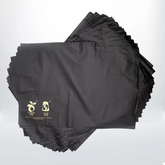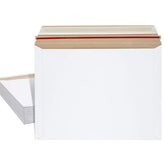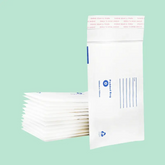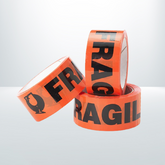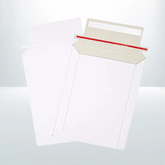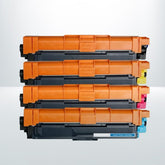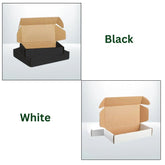You’re dealing with a wise decision of compostable packaging materials as they take months to degrade and drastically reduce landfill waste. These materials come from renewable resources such as corn starch and wood pulp, they do not release dangerous chemicals into the environment and at the same time they improve the state of the soil as they degrade into harmless substances.
Nonetheless, the effectiveness depends on getting these products to industrial composting facilities, which are scarce, which might increase the cost and the problems with logistics. While looking at possibilities such as polylactic acid and cellulose-based films, you will come across a way to bring about meaningful changes in the practices and consumer behaviors that would have positive impact on the environment.
Understanding Compostable Packaging Materials
Today, people are quite conscious of the choices they are making and thus, the transition to compostable packaging material is slowly being on the rise. This is the reason why you’re probably seeing many products wrapped in materials that claimed to have a lower ecological impact.
But what does the term ‘compostable packaging’ actually mean?
This means that compostable packaging materials have the ability to decompose in composting environment into those components that are non-hazardous and organic. As opposed to the standard plastics, the created substances break down in a couple of months if the conditions in the environment are favorable, not centuries.
This rapid breakdown minimises landfill space and in addition minimises the emission of dangerous chemicals into the biosphere.
However, the use of compostable material in the packaging rendered effective only if the packing is disposed of appropriately. These products require industrial composter to degrade fully, a thing that is hard to come by in most areas.
You will discover that although industries are already using compostable material packaging, the support system is not yet there.
What you need to know is that not all packaging that can be labeled as compostable is made in the same way. The time taken and extent of composting depends on the content of the wastes; the composting environment.
These differences show that the important need for higher standards and better and more detailed labeling to be followed. There is a true saying that when you choose those items which are genuinely compostable, then you are indeed working towards making our planet a better place for survival.
Types of Compostable Packaging: A Green Guide
Biodegradable materials can be used in packaging and this is an eco-friendly packaging solution as compared to plastic. It is intended to be biodegradable in industrial composting sites, thus no persistent material that may be dangerous to human health will be found when it decomposes. Here are some common types:Here are some common types:
-
Biodegradable Plastics
Made from renewable resources: These plastics are generally biodegradable, which are produced from plant sources such corn starch, sugarcane and potato starch.
Examples: Biodegradable plastic utensils; cups, plates, and bags as well as food packaging materials.
Important note: Just like we earlier noted, biodegradable plastics and compostable plastics are not the same thing. There are some that need certain conditions to disintegrate.
-
Paper and Cardboard
Classic compostables: Such items are readily composted in most domestic and industrial composting conditions.
Examples: The examples include paper bags, cardboard boxes, egg cartons among others.
Consider: Do not use paper products which have laminations or coatings because these are not easily composted.
-
Compostable Films
Thin and flexible: Such films are employed in packing of some foodstuff like fruits, vegetables, and even green coffee beans.
Made from various materials: Compostable films can either be made from biodegradable plastics, plant based polymers or a combination of the two.
Check for certifications: Also, use the logo such as “OK compost HOME” or “ASTM D6400” to be certain the film is bio-degradable.
-
Compostable Biopolymers
Synthetic but biodegradable: These materials are made from renewable resources and are intended to disintegrate at particular composting environment.
Examples: Two types of bioplastics namely PLA (polylactic acid) and PHA (polyhydroxyalkanoate).
Benefits: Biopolymers can be a versatile material for the use in construction they do not harm the environment and can be made as strong as the conventional plastics.
Remember: Even though compostable packaging is a much better option than traditional plastic one, it’s crucial to consult local composting services to see whether they are accepting the material or not. This is true because not all compostable materials should be taken by every facility available in the market. Besides, washing and engaging proper disposal practices respectively will help these materials decompose as required.
Benefits of Compostable Packaging
Eco-friendly packaging results to reduced cases of landfill waste disposal and pollution since they are biodegradable. That’s why these perks shed more light on the benefits of sustainable packaging as you consider the options for packaging products in your business or personal life.
Promotes Soil Health: Organics help enriched the soil when they decompose hence the importance of the phrase biotransformation. Unlike conventional packaging, these substances are not allergenic and do not first leach toxins into the earth thereby promoting health plant growth and other forms of life.
Reduces Carbon Footprint: It is also important to know that while the production and decomposition of compostable materials produce less units of greenhouse gases differently to synthetic packaging types. In choosing those items made out of compostable elements, you are choosing a low carbon ecology.
Encourages Sustainable Practices: If compostable packaging is used as the packaging material then more emphasis and attention can be paid to sustainable packaging throughout the cycle. The environmental aspect informs the consumer and companies about the importance of being responsible to the environment which may change the trend of the broader market.
These benefits paint a picture of true possibilities of compostable packaging to not just relieve the pressure exerted on our landfills but to also generate an enhanced ecological impact.
Challenges in Adopting Compostable Packaging
While compostable packaging offers a promising solution to plastic pollution, its widespread adoption faces several challenges:
-
Cost and Infrastructure
Higher costs: Compostable materials currently experience slightly higher manufacture costs as compared to conventional plastics.
Limited infrastructure: It requires commercial compost facilities to take compostable waste and there is currently no existence of it extremely available.
-
Consumer Education
Lack of awareness: It also revealed that a majority of the consumers lack knowledge on the uses of compostable packaging and how they can be disposed.
Confusing labels: The two terms of biodegradation and compostable are ambiguous and this makes the consumers have a hard time in understanding the two.
-
Performance and Durability
Limited durability: In some instances compostable polymers are not as sturdy or as rigid as a conventional plastics are.
Contamination issues: The other problems that may affect composting are the interference of food residues or any other contaminant that may be present.
-
Regulatory Hurdles
Complex regulations: Different states or countries set different laws and standards in handling the products and this may cause some issues to the manufactures and the retailers.
Certification costs: The procedures of acquiring certification on compostability mainly require a lot of resources, time, and money.
-
Supply Chain Issues
Limited availability: Take for instance the supply chain for compostable materials where it might not be so developed as that for normal plastic goods.
Dependency on raw materials: Recyclable resource which is used to prepare compostable material depends on climatic conditions such as global warming and farming systems.
In order to minimize the told challenges, it is imperative to have Government support, Industry involvement and Consumer Activation. Through investing in research, enhancing awareness and increasing infrastructure we can progress to a future where compostable packaging is used more frequently.
Here are a few strategies to educate your customers on composting process:
Utilize Point-of-Sale Materials: Display informative brochures and posters that highlight the benefits and the "how-to" of composting right where customers make their purchase decisions. This immediate visual reminder can significantly boost participation rates in composting programs.
Leverage Social Media Campaigns: Harness the power of social media to spread awareness and educate. Short, engaging videos demonstrating the composting process and its environmental benefits can go viral, reaching a broad audience quickly.
Offer Workshops and Webinars: Conduct educational sessions either in person or online. These can dive deep into the nuances of composting, providing valuable insights and practical tips on how customers can integrate these practices into their daily lives.
Frequently Asked Questions
Can Compostable Packaging Be Used in Microwave or Conventional Ovens?
You generally shouldn't use compostable packaging in microwave or conventional ovens, as they may not withstand the heat, potentially leading to melting or contamination of your food with non-edible materials. Always check manufacturer guidelines.
How Does Compostable Packaging Impact Long-Term Product Shelf Life?
You'll find compostable packaging may shorten product shelf life due to its breathable nature, which accelerates decomposition. However, it reduces environmental impact, aligning with eco-friendly goals by minimizing waste and resource use.
Are There Any Allergies Associated With Compostable Packaging Materials?
You might experience allergies from compostable packaging if it contains natural substances you're allergic to, like corn or wheat. Always check the material components to avoid unexpected allergic reactions.
Conclusion
As you transition to compostable packaging, remember it's about more than just switching materials. It involves understanding the lifecycle, from production through disposal. These products often consume less energy and emit fewer greenhouse gases than traditional plastics. However, challenges like higher costs and limited industrial composting facilities remain.
By sourcing the right Packaging Supplies in Melbourne and educating your customers on proper disposal practices, you can maximize the environmental benefits, making a significant impact on your carbon footprint and leading the way towards a more sustainable future.









